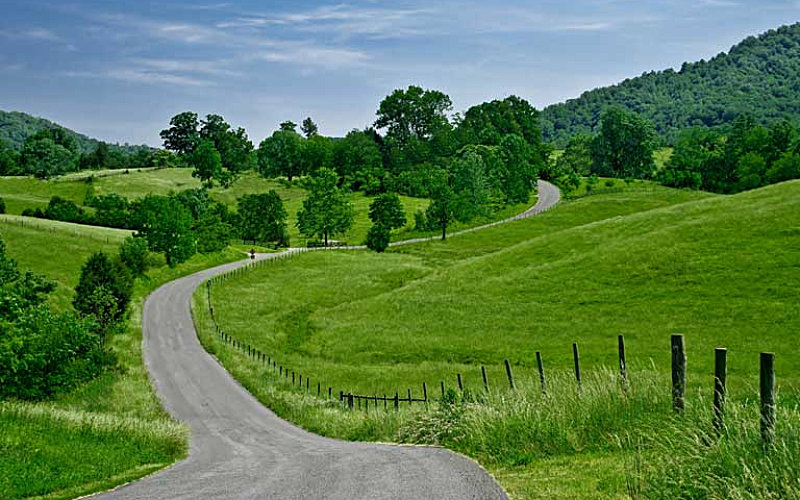Alternate Routes During Evacuation or Bug out


Most people don’t think about alternate routes. Instead they drive the same routes and roads everywhere they normally go. Those frequently traveled roads are typically the quickest to their destination and are the roads well traveled by most people in vehicles.
However if something were to happen that clogs the mainstream routes into traffic jams, would you know alternate routes to get to where you’re going?
During an evacuation or bug-out, will the masses choose the popular main routes and roads that are most often traveled?
Answer: YES. People are mostly creatures of habit. Most exhibit symptoms of normalcy bias, and a lack of good situational awareness and critical thinking ability during times of stress of crisis.
People, just, freak out. Panic.
Be Smart – Have Alternate Routes
As a preparedness-minded critical thinking person yourself, you can outsmart the mainstream masses by having a preconceived evacuation or bug out plan of alternate routes including options for multiple destinations.
Tip: If you do not have any alternate routes out of your immediate area, then focus on how you might handle it. Think about timing. Consider what may block your path and what you might do to mitigate those issues. Maybe it’s time for that helicopter… Or, do you live on or near the water? Maybe a boat? There’s always the bicycle… Maybe you will have to stay put. Then what? Are your prepared?
Here’s one that may be helpful during normal day-to-day travel: How many alternate driving routes do you know from your place of work to home? If the balloon goes up and you need to get home, which route are you going to take?
Or this one: If there is an evacuation (e.g. hurricane warning), how many alternate driving routes do you know that will bypass around the clogged masses sitting in traffic jams on the major roads, freeways, highways, and interstates?
Planning Alternate Routes
The discussion here is NOT about whether or not to evacuate or bug out. Rather it is about after one makes the decision to get out…
Consider the following while planning alternate routes:
Use Hard Copy Maps to find Alternate Routes
Keep a road atlas or maps of your state and surrounding states where you might travel. I feel that it’s important to have hard copy maps or road atlas, so that you can identify alternate roads that are less traveled by the mainstream. A hard copy printed map gives you a MUCH BETTER bigger picture when viewing alternate routes compared to GPS screens.
Supplement your atlas or state maps with the more detailed information such as local county or town maps. Some of them also show structures (houses, etc..). Do a internet search for your area which may turn up such a map…
A alternate route will likely not be a straight line to your destination (and may actually be significantly longer in distance). But the fact that you’re avoiding the clogged traffic jam will help assure that you get to your destination.
Ignored Roads are Great Alternate Routes
Neighborhood streets and secondary roads will be largely ignored by the mainstream.
Choke Points | Avoid Them!
Avoid parts of routes which may bottleneck in places where other main roads or highways intersect, such as those with a major on-ramp or off-ramp to a freeway or cornering with a major route. In a disaster, people may be clogged trying to get on or off in these locations.
Lots of Traffic Lights
If a road has traffic lights, it’s a road frequently traveled. Roads with fewer or no traffic lights are those less traveled in general.
Forgotten Roads Off The Beaten Path
There are often lesser known ‘shortcuts’ through the countryside, older roads which once were main routes and have mostly become forgotten.
GPS | They’re Good, to an extent
GPS can be very helpful, but be sure to keep street-level maps of your region and learn the routes of travel without reliance upon GPS.
Full Tank of Gasoline!
Get into the habit of maintaining a mostly full gas tank (don’t let it go below half a tank). Once you’ve established that habit your vehicle will always have a decent range (miles down the road) in the event of a sudden bug out. Most vehicles can make it 300 – 400 miles on a full tank, or more – depending. For example my truck’s range is 680 miles on a full tank of diesel…
SUMMARY
Regardless of where you live, everyone should have a plan to evacuate their home region with multiple alternate routes and destinations in mind. Also know several alternate routes home from your place of work. Make a plan now and you can check off another box for your preparedness. Not only that, but driving alternate routes can be enjoyable with new sites, scenery, and a sense of exploration.
Bugging Out | Will You Make It To Your Destination?
Post SHTF |Walking Along Railroad Tracks
Don’t forget to keep a 72-hour emergency kit in the vehicle too…
